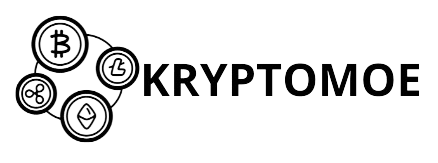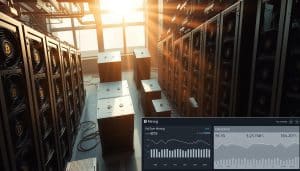Chainlink made a huge impact since its white paper was released in September 2017, locking in over $75 billion in DeFi value. When I first came across Sergey Nazarov and Steve Ellis’s thoughts on SmartContract.com, it was clear to me. They weren’t just introducing smart tech; they were solving the long-standing “oracle problem” in blockchain.
Chainlink stands as a decentralized oracle network. It connects smart contracts to the world outside the blockchain. Blockchains are super secure but can’t directly access external data like price feeds or databases. This limitation hinders many potential applications. Chainlink fixes this by providing reliable data and services to smart contracts.
I’ll share insights on Chainlink, combining an engineer’s perspective with my own experience. We’ll look at how it begins with simple price feeds and expands into a comprehensive set of tools. These include Off-Chain Reporting (OCR), Proof of Reserve (PoR), Verifiable Random Function (VRF), and several others.
The LINK token is essential within Chainlink, used for payments and security through staking. Its total supply caps at 1 billion LINK. Staking in the community currently offers around 4.32% APY. This involves a process with specific periods for increasing stakes and withdrawing. The system also ensures smooth conversion of off-chain revenues to LINK for node operat0r payments.
Let’s look at some key figures: there are over 3,000 price feeds and more than 3,000 projects integrated with Chainlink. It protects billions of dollars within protocols like Aave and Compound. These numbers stress the importance of understanding Chainlink’s mechanics, especially for those creating or evaluating smart contracts.
Key Takeaways
- Chainlink is a decentralized oracle network that connects smart contracts to off-chain data and systems.
- Founded by Sergey Nazarov and Steve Ellis, the project published its white paper in September 2017.
- The chainlink protocol explained spans OCR, PoR, VRF, Functions, Automation, Data Streams, CCIP, and CRE.
- LINK token powers payments and staking; max supply is 1 billion LINK and staking yields exist for community participants.
- Chainlink already secures billions in DeFi, with 3,000+ price feeds and 3,000+ projects using the network.
What is Chainlink?
I’ve been following oracles as they evolved from a theory to actual infrastructure. Chainlink started in 2014 as SmartContract.com. By 2017, it became Chainlink, created by Sergey Nazarov and Steve Ellis. Their goal was to make blockchain agreements reliable.
Chainlink stands as a decentralized oracle network. It serves as a bridge between blockchains and the real world. This link allows smart contracts to use reliable data feeds. They can get info on prices, weather, and economic indicators without relying on one source.
Overview of Chainlink
Chainlink combines information from various oracles and top data providers. This setup decreases the risk of errors and makes it tough for anyone to tamper with data. It’s partnered with big names like SWIFT, JPMorgan, and even the U.S. Department of Commerce. They’ve put financial data like GDP figures on the blockchain with the help of Pyth Network.
Key Features of Chainlink
- It gathers data from many sources to reduce risks.
- Off-Chain Reporting (OCR) allows nodes to agree on data off-chain. This can lower gas costs by up to 90%.
- It offers data streams that update in less than a second. This prevents early trades based on incoming data.
- CCIP enables secure token and data sharing across over 50 chains. It’s processed transactions worth more than $2.2B.
- Proof of Reserve confirms that digital assets have real backing. This is crucial for stablecoins and asset transparency.
- It uses Verifiable Random Function (VRF) and Automation. These ensure randomness and timely execution in blockchain applications.
- The Chainlink Runtime Environment (CRE) enhances transactions. It allows for off-chain computing, identity checks, and integration with traditional systems.
Importance in Blockchain
Oracles are vital for DeFi products and many business processes. Chainlink supports key platforms like Aave and Compound. It provides multiple layers of security, reducing the risk of cyber attacks.
Chainlink plays a big part in making tokenized assets more common. Experts believe the market for such assets could reach trillions by 2030. Chainlink is key infrastructure for this growth.
How Does Chainlink Work?
Imagine data entering a blockchain, checked by a guard for identity, reputation, and intent. Chainlink pulls data from various sources using decentralized oracles. It then delivers this data to smart contracts securely, reducing risks of manipulation and failure.
The Role of Decentralized Oracles
Oracle nodes in Chainlink are operated independently. They gather information from outside the chain, process it, and then send it to on-chain contracts. They get data from diverse sources to reduce the chance of manipulation and ensure reliability.
Chainlink uses a reputation system and economic rewards to ensure nodes act honestly. Nodes have stakes in the network and can lose their stake if they’re dishonest. This setup motivates them to provide accurate data, balancing cost, speed, and security for users.
Off-Chain Reporting (OCR) is crucial too. Through peer-to-peer messaging, nodes agree on data before making it on-chain. This process lessens transaction costs, speeds things up, and scales up important data sources like financial dApps.
Aggregating data from many sources leads to more secure and reliable information. This is especially true for getting resilient price data that dApps can trust.
Integration with Smart Contracts
Smart contracts link to Chainlink through specific on-chain contracts. These contracts request data, select oracles, and set how data is combined. With Chainlink Functions, contracts can make flexible API calls and handle complex tasks off-chain.
Chainlink automates certain actions for contracts, like regular checks or actions based on certain conditions, without needing people to step in. It ensures trust through verifiable results. Chainlink VRF proves randomness, while Proof of Reserve confirms asset backing.
For moving data and tokens across blockchains, CCIP offers a secure method. It keeps smart contract connections uniform across networks. This makes expanding apps to new blockchains smoother. I’ve seen its benefits in a bridge flow test, simplifying cross-chain messages.
Choosing oracle nodes, reputation systems, and data aggregation methods depends on the need. High-frequency trades might need fast, costly setups. Long-term verifications might prefer cost-effective, reliable systems. This choice impacts data security, trust, and costs in the Chainlink network.
To see how Chainlink is being used in new ways, like connecting to Bitcoin, check out this article: Chainlink expands to Bitcoin.
Chainlink’s Architecture
I have been around, running nodes and chatting with the folks at ConsenSys and other companies. It’s like looking inside a living beast, planned out with on-chain rules and a massive off-chain team at work. Simply put, the setup divides on-chain necessities from what’s better or safer off-chain.
Components of Chainlink Network
The Chainlink network’s on-chain segments include oracle contracts for requests, consensus through aggregation contracts, and mechanisms that link to smart contracts. These parts act as filters, making sure data checks out before updating a smart contract.
Then, there are the off-chain components run by tons of independent operators. Imagine thousands of pros running nodes, fetching info from outside, and using peer-to-peer systems like OCR. Add in data feeds, tools like VRF, and you’ve got an off-chain powerhouse.
Chainlink is beefed up with special modules: OCR for making consensus slick, Data Streams for constant info, CCIP for messages across chains, and more. These modules make things cheaper but keep everything secure and traceable.
The LINK token plays a huge role in the economics and governance, taking care of payments and staking. Features like Staking v0.2 and the Chainlink Reserve push for quality service and keep operators in line.
The Chainlink Node Structure
Node operators deal with gathering data, making sure it’s legit, and agreeing off-chain. They then bundle these insights and send them to the chain. It’s a system of roles, messages, and keeping trust to a minimum.
The system makes sure node operators stay straight through rewards and penalties. They get LINK for their work. Staking and reputation scores help pick who gets to fulfill requests. Bad actors face real penalties.
The CRE allows nodes to be super flexible. It lets enterprise nodes add on features without messing with the base code, making it easier to work with old systems and follow rules.
Security is layered thick. With distributed oracle nodes, varied data sources, and tech like VRF and Proof of Reserve, risks are spread out. OCR takes heavy tasks off the chain but keeps cryptographic promises solid.
Keeping a node up and running well takes a team effort, using tools like Prometheus and Grafana and following strict guidelines. Doing operations right is as crucial as the tech itself.
Use Cases of Chainlink
I’ve been working with oracles and adding data to live systems for years. Chainlink is top-notch when you need to connect real-world information with blockchain. Here are some ways it’s used to tackle engineering and business challenges.
DeFi platforms choose Chainlink price oracles for safety in lending and trading. Big names like Aave and Compound trust it for accurate prices. This helps avoid bad trades and unexpected liquidations. In my high-frequency trading strategies, using Data Streams made things faster and cheaper.
Proof of Reserve makes token assets and stablecoins open for checking. It lets people and companies prove assets are real using the blockchain. This stops anyone from changing data illegally.
Games and NFTs need fair random numbers. Chainlink VRF provides numbers that can’t be messed with. This builds trust with players because they know the game is fair.
Automation fits well with Chainlink. It can start contracts based on time or outside events. Things like automatic payments and trades work smoothly. This is thanks to reliable data from the real world.
CCIP helps tokens and data move across different blockchains. It makes building on multiple chains easier while keeping data safe. This is crucial for developers working in various blockchain environments.
Data Streams offer very quick market data for trading and DeFi. Picking the right Chainlink product helped reduce delays and costs. This made trading strategies more effective.
CRE integrations allow complex, multi-step processes. Companies can check identities, follow rules, and make deals all in one go. This relies on good data integration and strong blockchain services.
Different industries like finance, government, and gaming use Chainlink. Partners like Mastercard show its value in accessing big data. U.S. Department experiments show its public use is growing.
In insurance and logistics, smart contracts pay out based on data like weather. If something breaks, a claim can start right away. This trust comes from Chainlink’s secure data process.
Here’s a tip from me: always pick the right data speed for your needs. Use Data Streams for fast needs and regular feeds for slower updates. This choice impacts how well and cheaply your system runs.
Chainlink Statistics and Growth
I look at important stats and market signs to see how tech grows. Chainlink’s data shows it moving from a small tool to key tech for smart contracts. I’ll cover growth trends and adoption that builders and investors should know.
Market Growth Trends
The network now handles over 3,000 price feeds on many blockchains. This reach has led to more market share and interest from developers. More and more big companies are partnering up, showing Chainlink is ready for big business.
Revenue signs show strong demand from businesses. Reports suggest income from big clients is about $150 million a year. This comes from features like CCIP and reporting across chains. Token data gives a snapshot of LINK’s market position, among the top in crypto.
Cutting-edge updates reduced costs and increased performance. OCR technology dropped gas costs by up to 90%. This made Chainlink more appealing for decentralized apps and big companies looking to save.
Adoption Rates Over Time
As Chainlink added new features, more people started using it. It went from simple data feeds to a full suite of tools for the digital world. Each new feature helped Chainlink reach more users.
Now, over $75 billion in value is secured through DeFi apps using Chainlink, and it’s facilitated more than $2.2 billion in cross-chain transactions. These numbers show how widely used Chainlink’s services have become in the tech finance world.
More big businesses are trying out Chainlink as it gets cheaper to integrate. Public sector projects and big companies are testing LINK for money management. Over time, more products and lower costs have led to a faster adoption rate.
| Metric | Value | Why it matters |
|---|---|---|
| # of price feeds | 3,000+ | Shows breadth of real-time data coverage for smart contracts |
| TVL secured | ~$75B | Indicates economic reliance on oracle integrity |
| CCIP cross-chain volume | $2.2B+ | Evidence of cross-chain utility and liquidity movement |
| Estimated enterprise revenue | $150M/yr | Demonstrates commercial demand for oracle services |
| LINK supply cap | 1,000,000,000 | Frames tokenomics and scarcity |
| Staking APY (community) | ~4.32% | Attracts long-term holders and secures stake-based services |
I track these metrics to spot clear adoption trends. When product features, economic benefits, and company interest match up, adoption speeds up. This helps explain the market’s growth recently and what might happen next.
Predictions for Chainlink’s Future
I’ve seen Chainlink grow from a simple idea to a big network. I’ll share some thoughts on its future and things I watch out for. These include expert opinions, a forecast, and trade-offs.
Expert insights and forecasts
Experts see many good signs for Chainlink. They talk about more big partnerships and the Chainlink Reputation Engine helping its growth. The Cross-Chain Interoperability Protocol could also help by letting developers do more across different blockchains.
Prices might go up, say some studies. They predict prices could reach $30 to $35 soon, maybe even $100 by 2025. Under strong support from big companies, Chainlink could be worth $66 to $80 by 2027 to 2030. But, these guesses depend a lot on how well Chainlink is accepted.
The demand for Chainlink might grow because of its reserve system and how it makes money for companies. Its future plans include better tools for developers and other improvements. All these could make Chainlink even more valuable.
Future challenges and opportunities
Chainlink faces hurdles like high costs and needing to handle more transactions. Ethereum’s issues can make Chainlink expensive to use. It’s trying to fix this with Off-Chain Reporting, but there’s still a lot to do.
Another issue is that a few people own a lot of Chainlink tokens. This might cause problems with decisions and trading. How tokens are shared is important in predictions.
Chainlink has competitors to watch out for. There are other projects that might do better in some areas. Rules and regulations could also cause problems, especially for big users of Chainlink.
Yet, there are big chances for growth. Chainlink could play a huge role in managing digital assets and helping big finance firms. If these companies start using Chainlink more, it could grow quickly.
Here’s my simple advice. Chainlink is one of the top options for oracle technology right now. More innovation and better management of its tokens will decide its future position. It could lead or face tough competition.
Frequently Asked Questions about Chainlink
When I talk about blockchain projects, many ask about oracles. They look for simple, helpful answers to clear up any confusion. Here, I address common questions and misunderstandings with easy explanations and useful links.
Common Misconceptions
Many believe Chainlink is just for price feeds. But it’s far more, offering OCR, Data Streams, CCIP, PoR, VRF, Functions, Automation, and CRE. These services meet a variety of needs, from market data to cross-chain transfers.
Some think oracles lead to centralization. But Chainlink spreads risk with a decentralized approach, reputations for nodes, aggregation, proofs, and staking. This way, many players share the responsibility.
People also doubt LINK’s value, seeing it as speculative. However, LINK fuels the network, secures operations, and aligns economic interests. Its utility goes beyond mere speculation.
Technical Queries
How does OCR save on gas expenses? OCR gathers off-chain consensus, then reports it in one transaction. This method saves on unnecessary blockchain writes. Reports show it could cut gas costs by up to 90% in some cases.
Why should teams focus on CCIP? CCIP allows secure data and token exchanges across blockchains. It relies on layered oracle networks and standards for safe, straightforward transfers.
What benefits do VRF and PoR provide? VRF offers guaranteed fair randomness and proof of authenticity. Proof of Reserve (PoR) confirms the backing of on-chain tokens by off-chain assets. These features are crucial for gaming, DeFi, and verifying stablecoins.
What’s the current state of staking? With Staking v0.2, both node operators and community members can stake LINK. They can expect returns near mid-single percentages. Staking increases the network’s security.
Is Chainlink suited for business needs? Chainlink has been reliable for years without big issues. It uses multiple layers of security, checks, and enterprise solutions. Yet risks from centralized sources and token distribution do exist.
| Question | Short Answer | Why It Matters |
|---|---|---|
| what is chainlink and how it works | Decentralized oracle network feeding verified off-chain data into smart contracts. | Enables real-world data to power secure, permissionless contract logic. |
| understanding chainlink technology | Modular services: OCR for gas savings, CCIP for cross-chain messaging, VRF for randomness, PoR for reserves. | Modules let teams pick the right trade-offs for security, latency, and cost. |
| oracle questions about centralization | Decentralization is achieved via multiple nodes, aggregation, reputations, and staking. | Design reduces single-point failures and raises barriers to manipulation. |
| Gas cost reductions (OCR) | On-chain writes drop because consensus happens off-chain, saving substantial gas. | Lower operational costs for any app needing frequent updates. |
| Cross-chain transfers (CCIP) | Secure, standardized messaging and token movement across chains. | Enables composability and liquidity flows between blockchains. |
| Enterprise readiness | Proven uptime, CRE integrations, audits, and layered security controls. | Firms can map Chainlink into compliance and legacy workflows. |
Tools and Resources for Chainlink
I’ve spent a lot of time setting up nodes, diving into documents, and trying different things. In this guide, I share useful tools and paths that turned my interest into expert knowledge. This guide is all about hands-on tools, platforms, and ways to learn everything about chainlink tools and oracle nodes.
Key Software and Platforms
Begin with the Chainlink Node software. It lets you grab outside data, join OCR, and share combined results. This software is crucial for running oracle nodes in chainlink. It also lets you test price feeds on testnet environments.
Developers, check out the Chainlink Functions SDK, Automation tools, Data Streams APIs, and CCIP packages for faster integration. If you’re part of an enterprise team, look at the Chainlink Runtime Environment (CRE). It offers flexible runtimes and easy connections to old systems and identity services.
Many DeFi platforms choose Chainlink feeds. Names like Aave, Compound, and Synthetix use its price oracles. Exchanges and services that hold assets use Proof of Reserve integrations. CCIP acts as a bridge across more than 50 blockchains. This makes sending messages across chains practical for real-world applications.
Learning Materials and Guides
Start with official documentation and GitHub resources. They guide you through setting up nodes, OCR configurations, and practical uses of Functions and Automation. Visit Chainlink for links to these docs and developer kits.
Get into step-by-step tutorials to set up price feeds, use VRF, and apply CCIP for messaging across chains. Join Chainlink’s developer Discord and forums for help. These places also offer ready-to-use projects you can emulate.
- Read through the Chainlink whitepaper and OCR spec to understand its trust model.
- Launch a node in testnet and request a sample price feed to see how it works.
- Experiment with Chainlink Functions by making a simple API call to learn about computing off-chain.
- Go through CRE docs for large-scale or complex integrations.
| Resource | Use Case | Who Should Use It |
|---|---|---|
| Chainlink Node software (GitHub) | Run oracle nodes and OCR, submit aggregated data | Operators, DevOps |
| Functions SDK & Data Streams | Off-chain compute and streaming data | Backend developers |
| CRE (Chainlink Runtime Environment) | Enterprise connectors, compliance, identity | Integrators, CTOs |
| Community channels (Discord, forums) | Troubleshooting, tutorials, sample projects | All levels |
If you’re really into mastering chainlink technology, mix reading with practical experiments. I grew the fastest when I used the docs, testnet nodes, and community guides together. This approach helps you understand oracle security and how to be ready for real-world use way better than just learning the theory.
Conclusion
I have been following Chainlink since it started with oracle work. Now, it’s part of the bigger Web3 stack. It has taught me the importance of a decentralized oracle network. This network links smart contracts with real-world data. It works across various areas like price feeds and cross-chain messaging.
Chainlink has grown beyond just oracle services. It now includes OCR, Data Streams, VRF, and several other features. This growth addressed a major issue in blockchain – getting trusted outside data. It opened doors for DeFi, tokenizing real-world assets, and chain interoperability. The network’s impact is huge: thousands of data feeds, billions in CCIP flows, and immense value secured.
In my experience, Chainlink is both practical and ambitious. It provides advanced tools for developers and institutions. Yet, design choices are critical for security and performance. If Chainlink continues to grow in areas like CRE and CCIP, it will stay vital in Web3. The future will bring competition and regulation challenges. However, the value of a trusted oracle network is undeniable.








